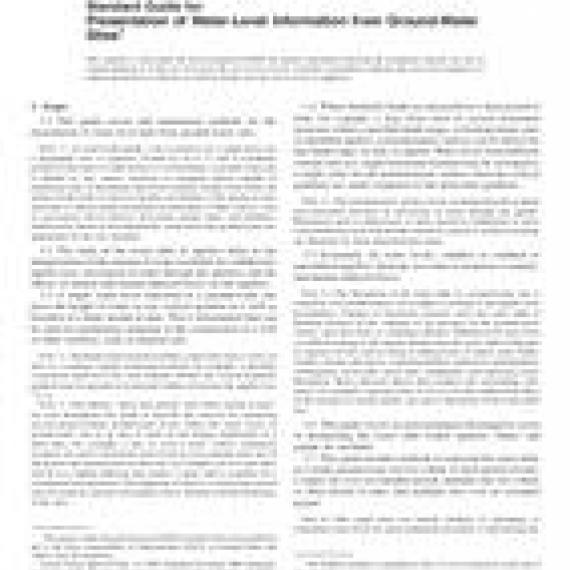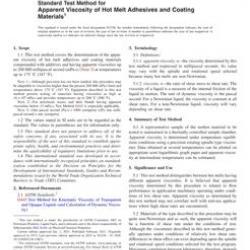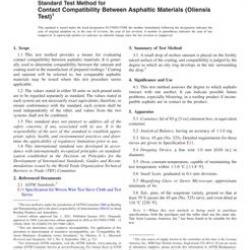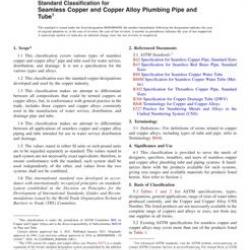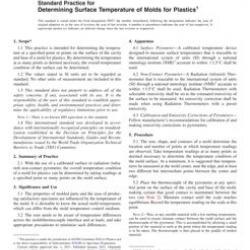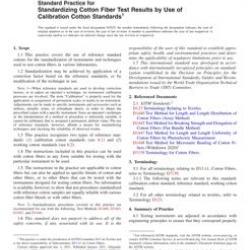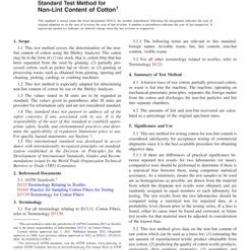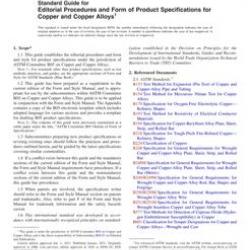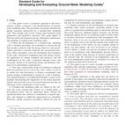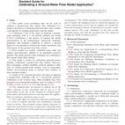No products
ASTM D6000-96(2008)
ASTM D6000-96(2008) Standard Guide for Presentation of Water-Level Information from Groundwater Sites
standard by ASTM International, 09/15/2008
Full Description
1.1 This guide covers and summarizes methods for the presentation of water-level data from ground-water sites.
Note 1 - As used in this guide, a site is meant to be a single point, not a geographic area or property, located by an X, Y, and Z coordinate position with respect to land surface or a fixed datum. A ground-water site is defined as any source, location, or sampling station capable of producing water or hydrologic data from a natural stratum from below the surface of the earth. A source or facility can include a well, spring or seep, and drain or tunnel (nearly horizontal in orientation). Other sources, such as excavations, driven devices, bore holes, ponds, lakes, and sinkholes, which can be shown to be hydraulically connected to the ground water, are appropriate for the use intended.
1.2 The study of the water table in aquifers helps in the interpretation of the amount of water available for withdrawal, aquifer tests, movement of water through the aquifers, and the effects of natural and human-induced forces on the aquifers.
1.3 A single water level measured at a ground-water site gives the height of water at one vertical position in a well or borehole at a finite instant in time. This is information that can be used for preliminary planning in the construction of a well or other facilities, such as disposal pits.
Note 2 - Hydraulic head measured within a short time from a series of sites at a common (single) horizontal location, for example, a specially constructed multi-level test well, indicate whether the vertical hydraulic gradient may be upward or downward within or between the aquifer (see 7.2.1).
Note 3 - The phrases "short time period" and "finite instant in time" are used throughout this guide to describe the interval for measuring several project-related ground-water levels. Often the water levels of ground-water sites in an area of study do not change significantly in a short time, for example, a day or even a week. Unless continuous recorders are used to document water levels at every ground-water site of the project, the measurement at each site, for example, use of a steel tape, will be at a slightly different time (unless a large staff is available for a coordinated measurement). The judgment of what is a critical time period must be made by a project investigator who is familiar with the hydrology of the area.
1.4 Where hydraulic heads are measured in a short period of time, for example, a day, from each of several horizontal locations within a specified depth range, or hydrogeologic unit, or identified aquifer, a potentiometric surface can be drawn for that depth range, or unit, or aquifer. Water levels from different vertical sites at a single horizontal location may be averaged to a single value for the potentiometric surface when the vertical gradients are small compared to the horizontal gradients.
Note 4 - The potentiometric surface assists in interpreting the gradient and horizontal direction of movement of water through the aquifer. Phenomena such as depressions or sinks caused by withdrawal of water from production areas and mounds caused by natural or artificial recharge are illustrated by these potentiometric maps.
1.5 Essentially all water levels, whether in confined or unconfined aquifers, fluctuate over time in response to natural- and human-induced forces.
Note 5 - The fluctuation of the water table at a ground-water site is caused by several phenomena. An example is recharge to the aquifer from precipitation. Changes in barometric pressure cause the water table to fluctuate because of the variation of air pressure on the ground-water surface, open bore hole, or confining sediment. Withdrawal of water from or artificial recharge to the aquifer should cause the water table to fluctuate in response. Events such as rising or falling levels of surface water bodies (nearby streams and lakes), evapotranspiration induced by phreatophytic consumption, ocean tides, moon tides, earthquakes, and explosions cause fluctuation. Heavy physical objects that compress the surrounding sediments, for example, a passing train or car or even the sudden load effect of the starting of a nearby pump, can cause a fluctuation of the water table (1).
1.6 This guide covers several techniques developed to assist in interpreting the water table within aquifers. Tables and graphs are included.
1.7 This guide includes methods to represent the water table at a single ground-water site for a finite or short period of time, a single site over an extended period, multiple sites for a finite or short period in time, and multiple sites over an extended period.
Note 6 - This guide does not include methods of calculating or estimating water levels by using mathematical models or determining the aquifer characteristics from data collected during controlled aquifer tests. These methods are discussed in Guides D 4043, D 5447, and D 5490, Test Methods D 4044, D 4050, D 4104, D 4105, D 4106, D 4630, D 4631, D 5269, D 5270, D 5472, and D 5473.
1.8 Many of the diagrams illustrated in this guide include notations to help the reader in understanding how these diagrams were constructed. These notations would not be required on a diagram designed for inclusion in a project document.
Note 7 - Use of trade names in this guide is for identification purposes only and does not constitute endorsement by ASTM.
1.9 This guide covers a series of options, but does not specify a course of action. It should not be used as the sole criterion or basis of comparison, and does not replace or relieve professional judgment.
1.10 The values stated in inch-pound units are to be regarded as standard. The values given in parentheses are mathematical conversions to SI units that are provided for information only and are not considered standard.
1.11 This guide offers an organized collection of information or a series of options and does not recommend a specific course of action. This document cannot replace education or experience and should be used in conjunction with professional judgment. Not all aspects of this guide may be applicable in all circumstances. This ASTM standard is not intended to represent or replace the standard of care by which the adequacy of a given professional service must be judged, nor should this document be applied without consideration of a project's many unique aspects. The word "Standard" in the title of this document means only that the document has been approved through the ASTM consensus process.

